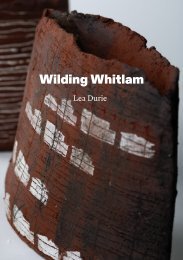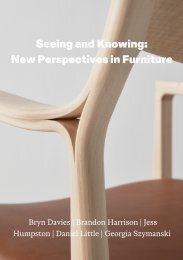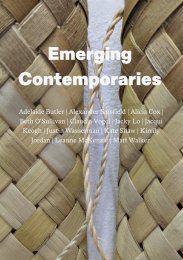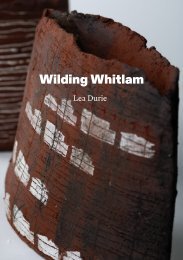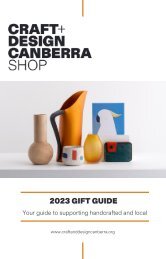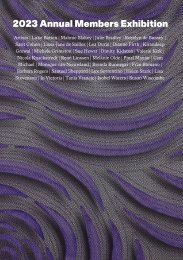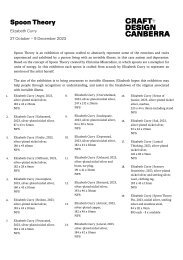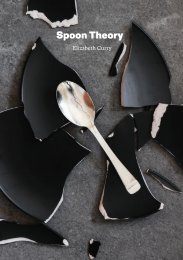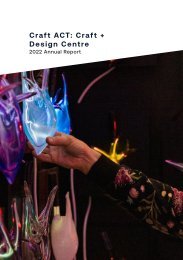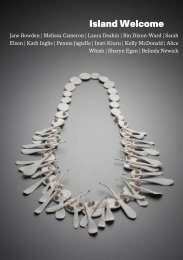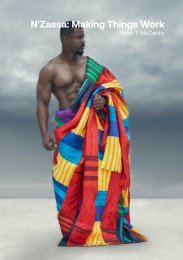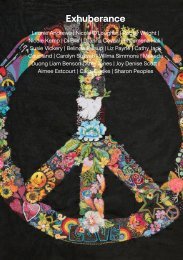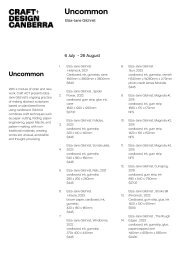Pattern Translation: Al Munro
11 July – 31 August 2019 Solo exhibition by Al Munro* which draws from her recent body of work. The exhibition consists of five pairs of dresses sewn from digitally printed fabrics and paintings. The process by which these pairs of works were produced involved translating textile patterns into painted forms, translating and manipulating these via the conventions of repeat fabric design to create digitally printed textiles/paintings, and then translating back to traditional painted form. Pattern Translation continues Munro's interest in translating and distorting mathematical patterns to explore relationships between textile patterning and painted abstraction and begins a new focus on the aberrations and slippages that can occur as a pattern, like a spoken message, is translated from one ‘language’ to another.
11 July – 31 August 2019
Solo exhibition by Al Munro* which draws from her recent body of work. The exhibition consists of five pairs of dresses sewn from digitally printed fabrics and paintings. The process by which these pairs of works were produced involved translating textile patterns into painted forms, translating and manipulating these via the conventions of repeat fabric design to create digitally printed textiles/paintings, and then translating back to traditional painted form.
Pattern Translation continues Munro's interest in translating and distorting mathematical patterns to explore relationships between textile patterning and painted abstraction and begins a new focus on the aberrations and slippages that can occur as a pattern, like a spoken message, is translated from one ‘language’ to another.
You also want an ePaper? Increase the reach of your titles
YUMPU automatically turns print PDFs into web optimized ePapers that Google loves.
of Australia, Transformations: the<br />
language of craft.<br />
I like the idea that craft can be a<br />
universal intermediary language –<br />
making the foreign more familiar<br />
(whether it’s new technology or<br />
another culture). Rather than seeing<br />
things lost in translation, with craft –<br />
through the transformative skills of the<br />
maker – we more often see something<br />
added in translation.<br />
In Kyoko Hashimoto’s reworking of<br />
the traditional Japanese form of<br />
Buddhist prayer beads or Nenju in<br />
Shifts in Japanese Materiality (in which<br />
the aggregate in the concrete beads<br />
is coloured plastic from her son’s<br />
discarded toys) we see a ubiquitous<br />
object (a string of beads) transformed<br />
into a poignant statement about the<br />
environmental impact of global trade<br />
and our, often unwitting, personal<br />
culpability (at least, that’s my rough<br />
translation).<br />
In Liam Mugavin’s House Chair series<br />
the craft process is a light but refined<br />
touch, recontextualising the reclaimed<br />
timbers, to allow, as he says, ‘the<br />
material to speak and<br />
the designs to tell their own stories.’<br />
(who like the curator Bic Tieu, is also a<br />
maker) that does more justice to the<br />
works and the ideas expressed than I<br />
can in these few paragraphs.<br />
*<br />
The opportunity to look at these<br />
three exhibitions together allows us<br />
to see contrasts and connections that<br />
make us think in ways that would be<br />
different if they were seen alone or in<br />
some other combination. Another clear<br />
connection I see across the works in<br />
these shows is an aesthetic one – there<br />
is, quite simply, a lot of beautiful work<br />
here!<br />
I love that through craft, our many rich<br />
differences, whether political, social or<br />
cultural, can be roughly translated into<br />
things that inspire and unite us.<br />
Brian Parkes<br />
CEO, JamFactory<br />
Adelaide, July 2019<br />
There is a terrific catalogue<br />
accompanying Shifts in Japanese<br />
Materiality available online. It includes<br />
a great essay by Dr Nicholas Bastin




